“This is very strange, what’s happening here,” Toshiko Mori remarked with concern in her voice to a crowd assembled to hear her speak in Sarasota on the morning of March 11 at New College of Florida’s Sainer Pavilion.
The New York-based architect, who has designed a small handful of private homes along this postcard-perfect stretch of Florida’s Gulf Coast, was in town to receive the inaugural Philip Hanson Hiss Award, an award program launched last year by the nonprofit Architecture Sarasota that honors the legacy of the late Philip Hanson Hiss III. A prolific local real estate developer, it was Hiss who, as board chairman of New College, commissioned I.M. Pei to design the school’s bayfront campus in 1963.
.webp)
Mori receiving the Hiss Award from Architecture Sarasota at the Paul Rudolph–designed Umbrella House on March 11. Photo by Ryan Lester, courtesy Architecture Sarasota
Mori's remark on the “strangeness” of presenting the Hiss Award lecture at New College touched down on a sobering matter on the minds of many that morning and throughout an otherwise celebratory weekend: the turmoil underway at the publicly funded liberal arts honors college following Florida Governor Ron DeSantis’ takeover meant to transform it into a conservative Christian institution.
Just moments before briefly commenting on the proverbial elephant in the room, Mori had described what she referred to as one of her studio’s more challenging commissions, one located a world away from the monied coastal enclaves of Sarasota: the Fass School and Teachers’ Residence (2021), a thatch-roof–topped facility built by local workers with mud brick in a devoutly Muslim village in rural Senegal.
“After three years of deliberation, it was agreed that having kids study secular education and to be open about what’s outside of their closed society is necessary for their survival,” Mori said of the project. “And now I’m here speaking at New College and it’s like the opposite of what we did [in Senegal] where we went into a very closed, religion-oriented society and had to open them up.”
If anything, the far-right usurping of New College provided an even more charged backdrop to highlight the progressive philosophies of Hiss and Mori.
“Hiss promoted the importance of design in helping support democratic values, and he believed that good design should be available to all communities and all stakeholders,” Mart Hylton, president of Architecture Sarasota told RECORD. He also noted the developer's dedication to environmental and contextual adaptation and experimentation in design, whether it be “embracing new materials or new ways of thinking about space, which in this particular climate is about making the connection between nature and the built environment.”
“I think Mori is very much in keeping with these values,” Hylton added. Her work, he said, is “interesting in that she's not the kind of designer where you can point to a building and say, ‘this is a Toshiko Mori.’ It’s how she really works to understand, holistically, the essence of a place. And I think that was very much what Hiss was promoting, and what he hoped to achieve with the work that he commissioned and was responsible for.”
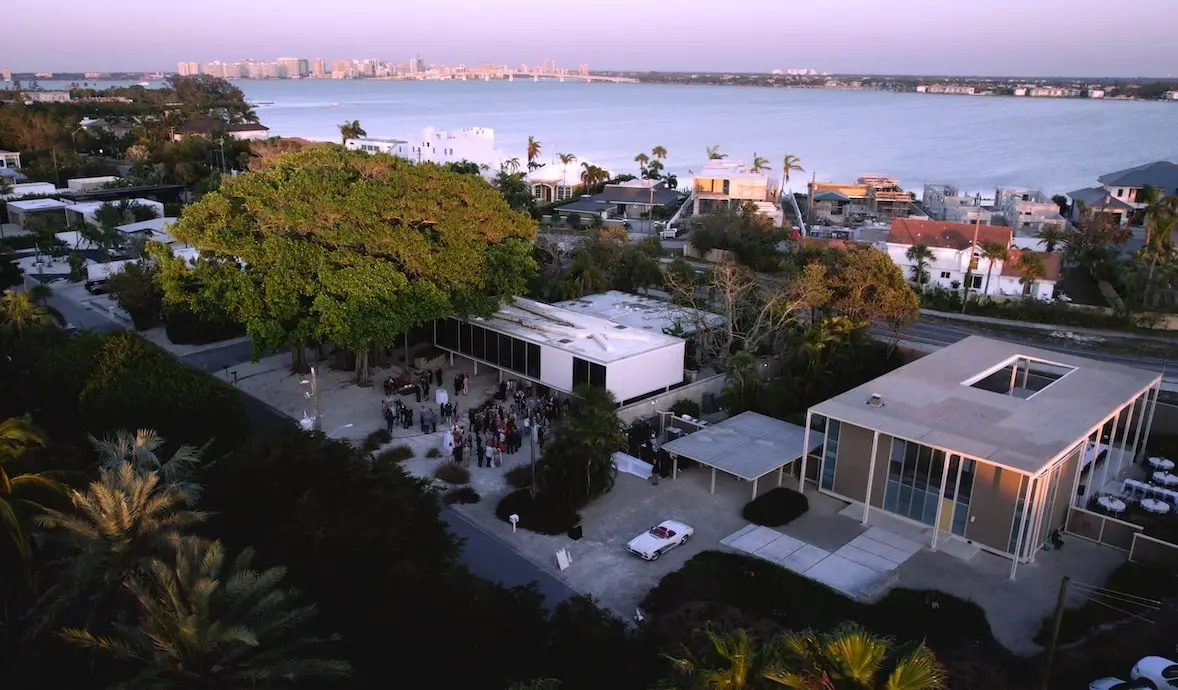
The Lido Shores section of Sarasota with the Umbrella House and Tim Seibert–designed Hiss Studio at right . Photo by Ryan Lester, courtesy Architecture Sarasota
Hylton, a World Monuments Fund alumni and former director of the historic preservation program at the University of Florida’s School of Design, Construction, and Planning, was named as inaugural president of Architecture Sarasota late last year following a brief tenure as the National Park Service’s first-ever architect for climate change. Describing itself as a “forum for the education, advocacy, and celebration of good design in the built environment,” Architecture Sarasota itself is also relatively new on the scene, established in 2021 following the merger of the Sarasota Architecture Foundation and Sarasota Center for Architecture.
Like its predecessor organizations, Architecture Sarasota is dedicated to promoting and protecting the legacy of the Sarasota School of Architecture, a post-war regional architectural style also known as Sarasota Modern that flourished on Florida’s central west coast from the early 1940s through the mid-60s. With Hiss serving as its “impresario,” the movement—a sort of humid weather sibling to the Desert Modernism style originating from Palm Springs during the same era—was carried out by architects including Ralph Twitchell, Victor Lundy, Tim Seibert, Carl Abbott, and most famously, Paul Rudolph, who moved to Sarasota after studying with Walter Gropius at the Harvard Graduate School of Design.
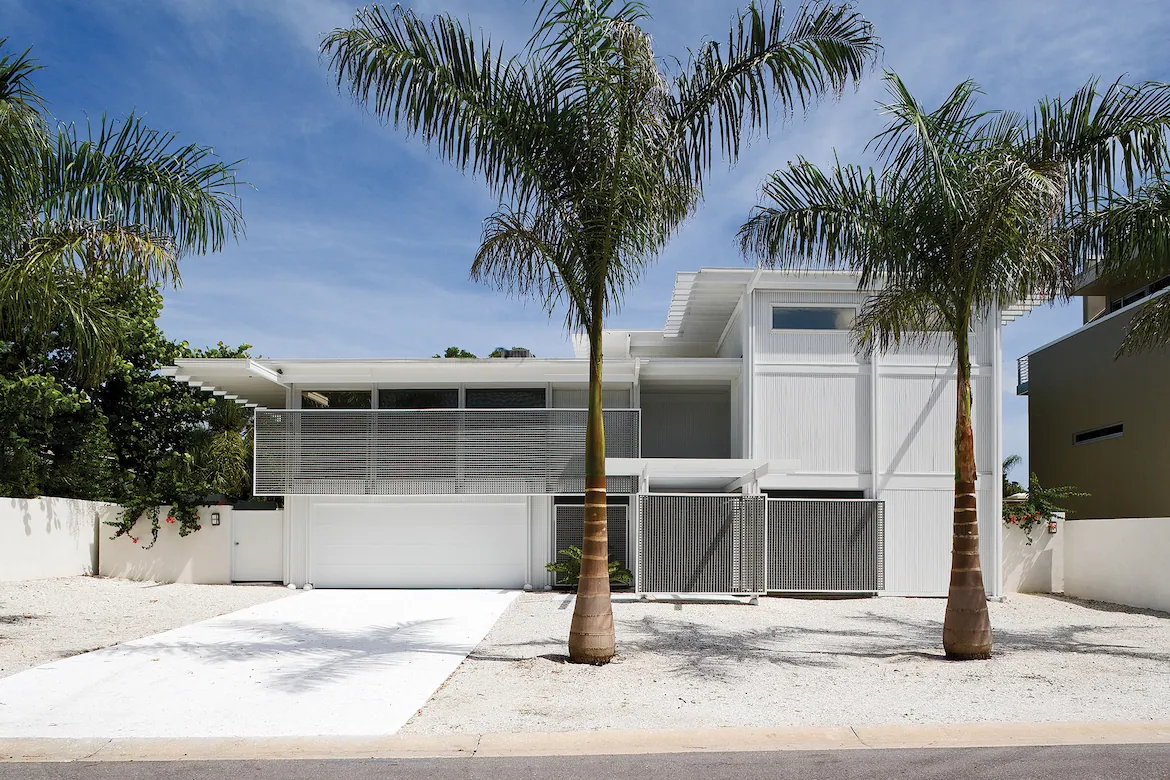
1

2
Rudolph's Harkavy Residence (1957) in Lido Shores (1); Seibert's Hiss Studio (1953), also in Lido Shores (2). Photos by Greg Wilson, courtesy Architecture Sarasota (1+2)
In addition to public programming that includes walking and kayak tours, lectures, and exhibitions staged at the organization’s homebase at the McColloch Pavilion in downtown Sarasota (currently on view is Tropical Modernism: Designing for Climate), recent initiatives of Architecture Sarasota include a comprehensive updating of an existing cultural resource survey identifying Sarasota School of Architecture sites to include in a geospatial database. There’s also the New College Challenge, a year-long initiative developed and launched in partnership with New College that brings together faculty and students from six leading design schools to “transform the campus into a community incubator for exploring the sustainable future of higher education and coastal resilience.”
Despite the controversial regime change at New College, the Challenge is moving forward as of now; the six design teams are slated to converge this May in Sarasota to present their future-thinking concepts, which would no doubt win praise from Hiss and the college’s other founding fathers.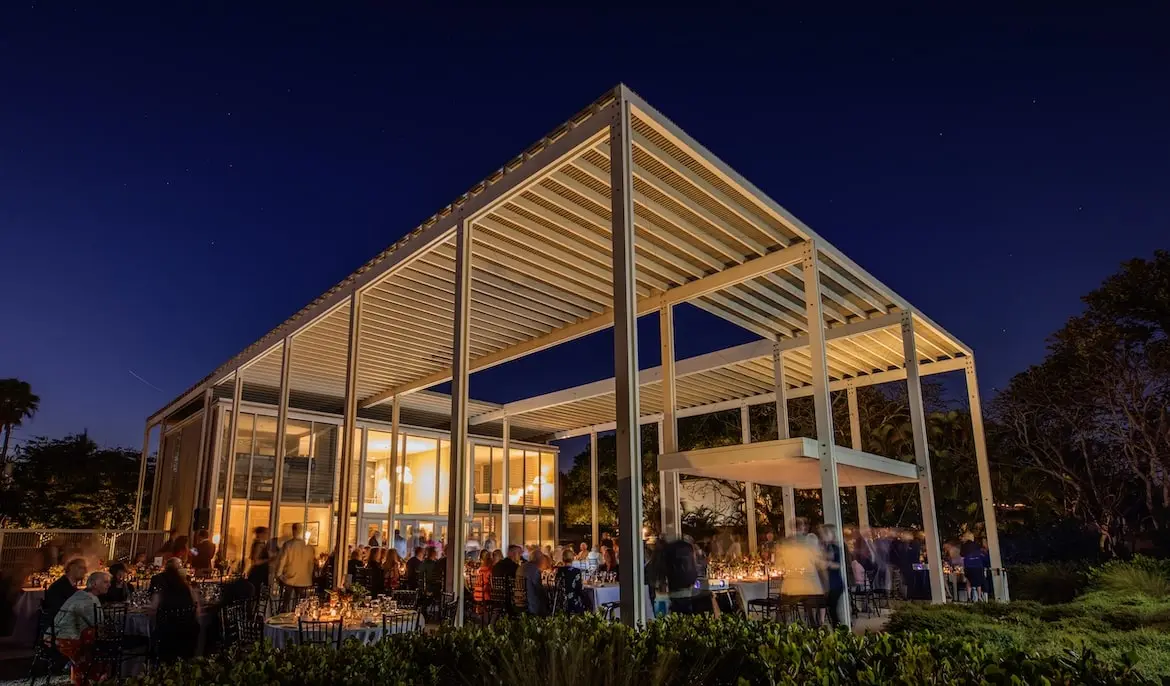
The Umbrella House during the Hiss Award dinner. Photo by Ryan Lester, courtesy Architecture Sarasota
Later in the evening following the public conservation at New College, Mori was presented with the Hiss Award at a swank, 200-person fête held poolside at what’s perhaps his most famous residential commission, the Rudolph–designed Umbrella House in Sarasota’s Lido Shores neighborhood. Mori referred to Brooklyn-born Hiss, who died in 1988 at the age of 78, as an “intriguing personality—a patron of architecture and activist instigator for whom education was so important. As somebody who’s also invested in education as much as architecture, he has been in the back of my mind for a long time.”
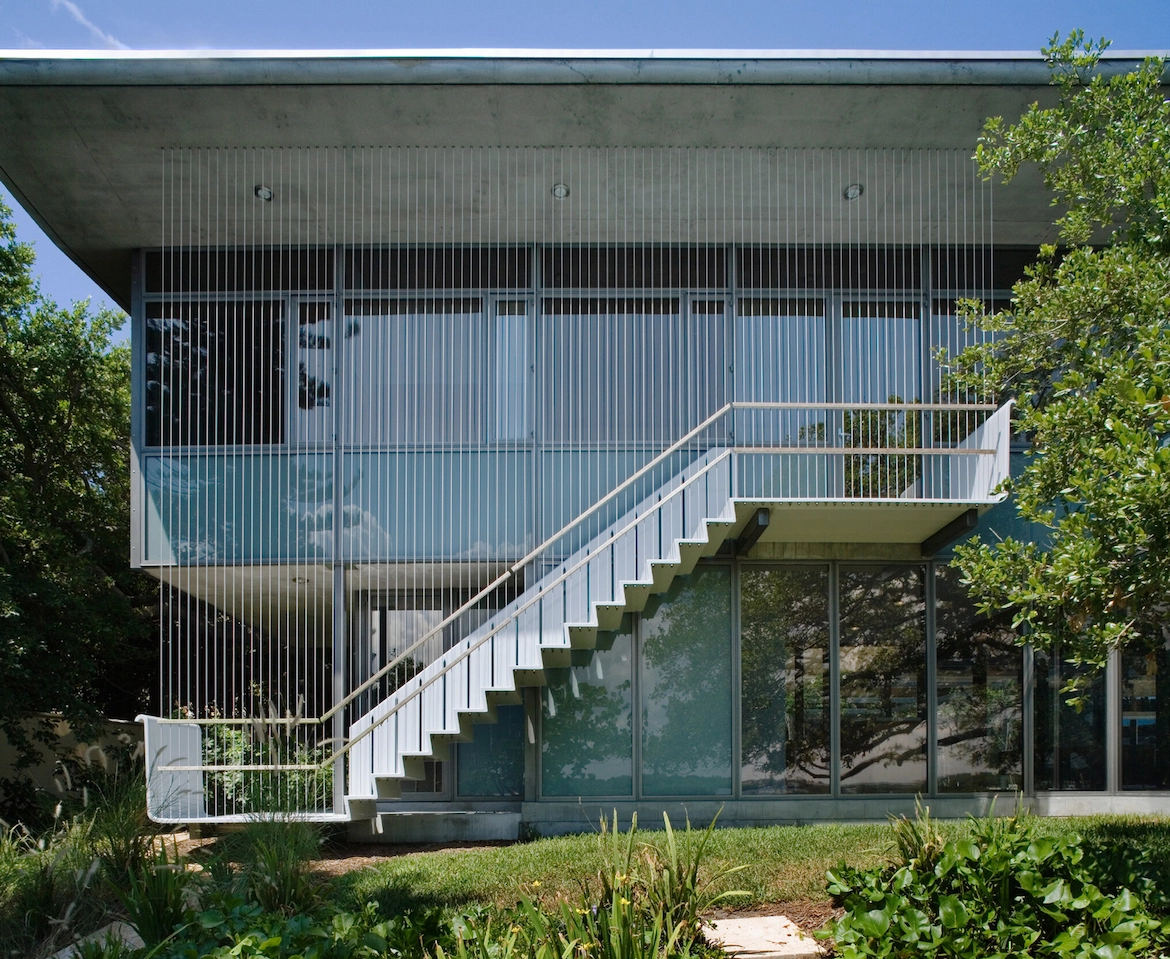
Mori's 2005 addition to the Burkhardt-Cohen House on Casey Key. Photo by Paul Warchol, courtesy Architecture Sarasota
Mori’s dedication to teaching, including as the first tenured female faculty member at the Harvard Graduate School of Design and later chair of the school’s architecture department from 2002 to 2008, was appropriately emphasized throughout the awards program as much as her built work, which in the Sarasota area includes a guest house and standalone “addition”—completed in 1999 and 2005—at a 1957 Rudolph-designed residence on Casey Key known as the Burkhardt-Cohen House. Ed and Betsy Cohen, longtime friends of Mori who first met the architect while summering in Maine, have served as "great custodians" of the property, to quote Mori, since 1981.
(RECORD joined Mori for a tour of the Burkhardt-Cohen House and her additions to the property along with visits to Rudolph’s Hiss-commissioned 1959 addition to Sarasota High School and the three curvaceous 1950s-60s-era buildings designed by Lundy that comprise the campus of Sarasota’s St. Paul Lutheran Church. Rudolph and Twitchell’s Cocoon House (1948) in Siesta Key and Rudolph's Harkarvy Residence (1958) in Lido Shores were also visited.).webp)
1
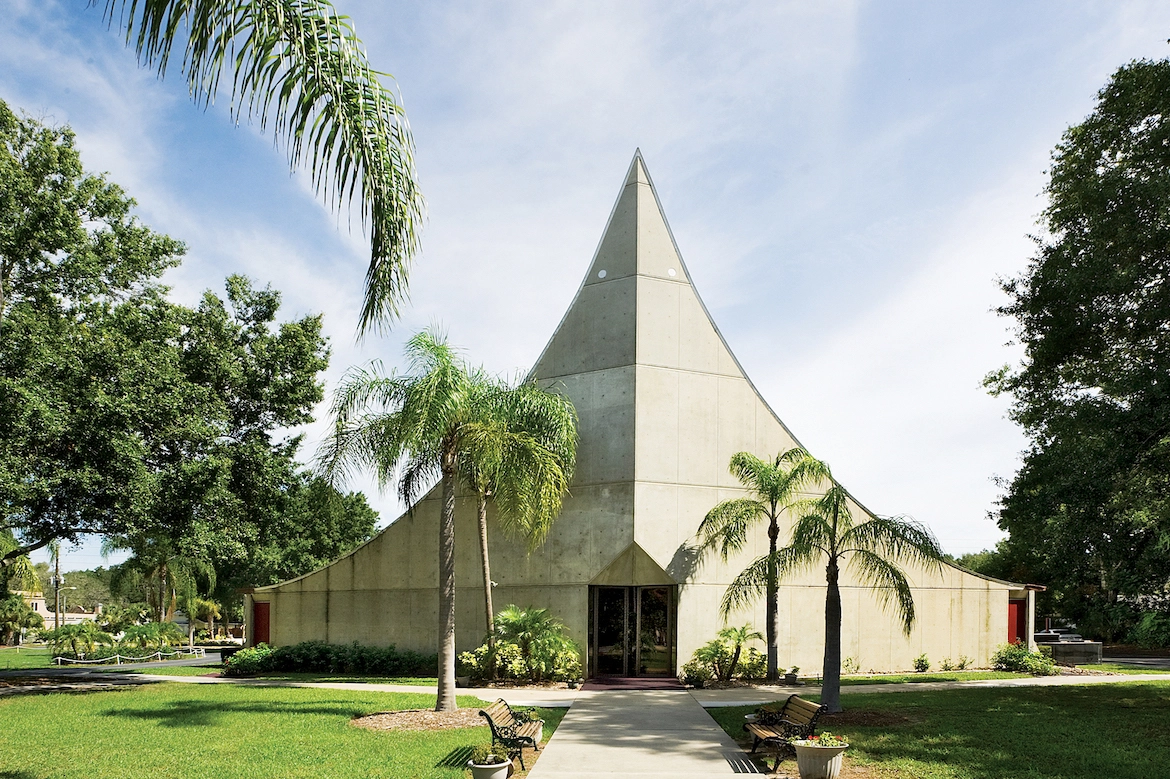
2
Ralph Twitchell and Rudolph's Cocoon House, also known as the Healy Guest House, in Siesta Key (1948) (1); The main sanctuary of Victor Lundy's St. Paul Luthern Church in Sarasota (1969) (2). Photos by Ryan Gamma (1) and Greg Wilson (2), courtesy Architecture Sarasota (1+2)
-min.jpg?t=1680140864&width=1080)









